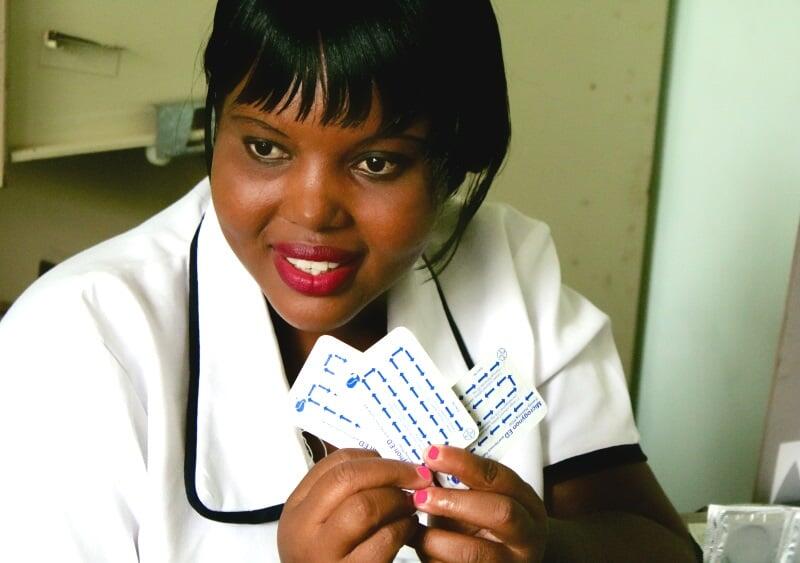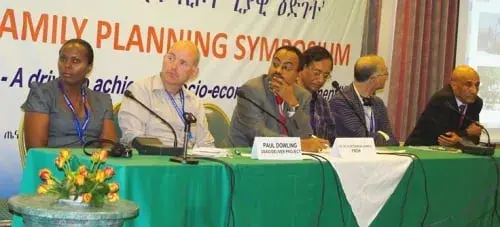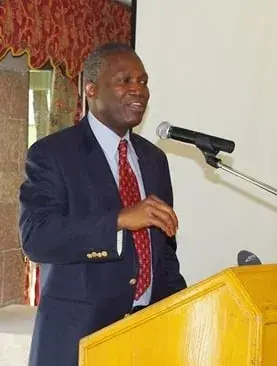Malawi – “I thought family planning was for married people, not for girls. We were not friendly to young people. We were judgmental,” says Blessings Sonkhanani, a nurse at Namwera Health Center. “Now I know that anyone of childbearing age is eligible for family planning. Now we know what young people need, we’re special to them because we build relationships (with them) and they trust us.”
"Now we know what young people need, we’re special to them because we build relationships (with them) and they trust us.” - Nurse Blessings Sonkhanani, Namwera Health Center, Malawi
This nurse’s attitude prior to receiving training on how to provide youth-friendly services is not uncommon among staff at health centres in countries across East and Southern Africa. Sadly, it is one of the main barriers to youth accessing sexual and reproductive health services, including prevention of HIV and other sexually transmitted infections (STIs), as well as unplanned pregnancy.
It is also a major contributor to high HIV infection rates in adolescents and young people. HIV is the leading cause of death among adolescents in Africa and every hour, around 34 young African women are newly infected with HIV, according to a new UNAIDS/African Union report.
The challenge for young people
Malawi’s young people lack knowledge and skills when it comes to their sexual and reproductive health and rights (SRHR), and the services available to them. The negative impact of this reality is reflected in the data:
- HIV prevalence (ages 15-24): 3.8% females, 2.4% males
- Condom use (ages 15-24): 57.2% females, 69.9% males
- Adolescent birth rate (ages 15-19): 143/1000 girls
- Child Marriage (ages 15-19): 28.4% females
Barriers to young people accessing services include gaps at the level of policy. The Malawi National Youth Policy stipulates that young people have the right to access SRH information and services, while the Ministry of Education (MoE) policy does not allow the distribution of family planning products in schools. And while the MoE has begun to incorporate sexuality education into its curriculum, this policy inconsistency turns health facilities into critical sites for youth interventions.
Need to address root causes of HIV epidemic
If the course of the HIV epidemic is to change, its root causes need to be addressed and the conditions that make people – particularly young people – especially vulnerable need to be understood. One of them is inadequate access to good quality sexual and reproductive health information, commodities and services.
In Malawi, UNFPA’s Safeguard Young People (SYP) programme recognizes that health workers are at the core of youth-friendly services. This is why SYP has supported the Ministry of Health (MoH) with training 120 health service providers on adolescent sexual and reproductive health and rights (ASRHR) and youth-friendly health services (YFHS). Blessings Sonkhanani – and the many young people she now provides services for – is one of the nurses who has benefited from this training.
To date, hundreds of thousands of young people have also benefited:
- Young people (ages 15-24) accessing YFS in SYP areas: 395,307.
The SYP Intervention
One of the areas in which the Safeguard Young People (SYP) Programme supports the Ministry of Health (MoH) is through the provision of youth-friendly health services (YFHS) in six Malawi districts where rates of teenage pregnancy, early marriage, gender-based violence, and school dropouts are high. The SYP goal is to improve the SRH status of young people aged 10 to 24 by the end of 2019.
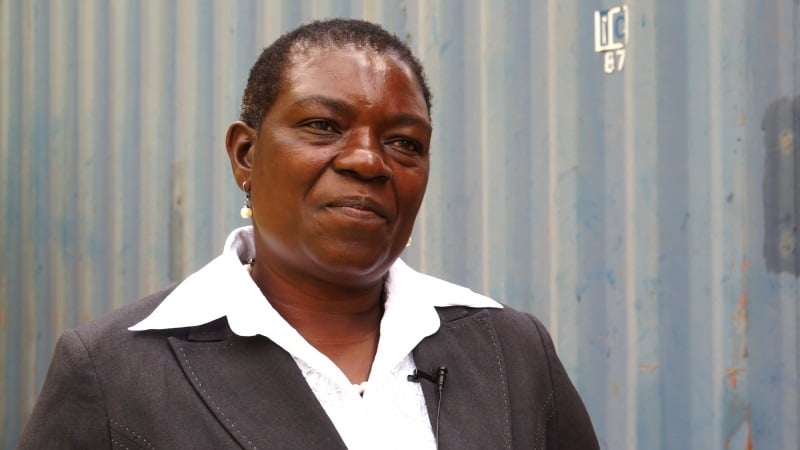 UNFPA Malawi Assistant Representative, Dorothy Nyasulu. Photo: UNFPA Patrick Shepherd |
“Young people do not want to queue in line with older women who gossip.” - Dorothy Nyasulu, Assistant Representative for UNFPA Malawi
Long distances to access services, long waiting times, poor provider attitudes, and negative judgments from adult clients create barriers to SRH service access for young people in rural Malawi: “Young people do not want to queue in line with older women who talk their own language, ask why the young person is there, and gossip. Young people need their own spaces where they can be free, and where people are specifically trained to address their issues,” explains Dorothy Nyasulu, Assistant Representative for UNFPA Malawi.
SYP emphasizes static and outreach services, integrated HIV/SRH services, promotion and distribution of contraception, and promotion of HTC, ART, antenatal care and post-natal care. But ‘youth friendly’ is also about positive human interaction, about the way spaces make young people feel, about understanding their social dynamics.
Evaluating health centres for ‘youth friendliness’
The MoH has developed comprehensive YFHS accreditation standards that are being applied nationwide. These include teams of assessors going to health facilities unannounced, to evaluate service provision against accreditation criteria. They observe, for example, provider-client interactions; whether the facility has adequate ‘youth-friendly’ signage; whether family planning commodities are readily available; and whether the facility offers a separate space or special hours of operation for young people. Young people’s feedback on service quality is also included in accreditation decisions.
To date, the MoH has accredited more than 100 YFHS facilities. SYP assists with implementation at the facilities in its target districts, outfitting them with furniture and recreational and sporting materials, to attract young people and simultaneously gives them access to knowledge and service provision. The health facilities work closely with youth clubs and NGOs to link young people to other services (e.g., scholarships), creating a comprehensive support structure.
"After training, I see the benefits of going to people’s houses to teach them. They learn from me and I’m not shy anymore.” - Rose, 23, a youth-friendly health service facilitator
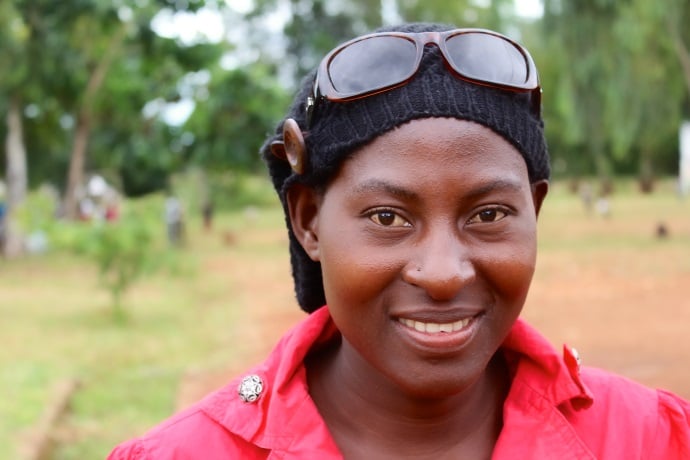 Rose, 23, a beneficiary turned facilitator, educates other people about sexual health. Photo: UNFPA / Meaghan Charkowick |
Previously a beneficiary, Rose, 23, is now a facilitator: “When I joined youth friendly, I changed after I received training,” she says. “I was shy about meeting people and especially to talk about sex. But after training, I see the benefits of going to people’s houses to teach them. They learn from me and I’m not shy anymore.”
And that is how most young people refer to their positive interaction with SYP: When I joined ‘youth friendly…’ Rather than distinguishing between the providers – an NGO, a health facility, or a youth club they have joined – they refer to the SYP ‘youth friendly’ umbrella term, the UNFPA intervention itself that is saving their lives and giving them hope.
Early success for SYP
To date, 71 per cent of the total youth population in SYP target districts has accessed YFHS on family planning, condom provision, HIV testing and counselling, STI management, nutrition and substance abuse. Early reports from the districts emphasize a tremendous increase in demand for services. “The youth demanding these services are now huge in number. We need more trained providers,” says Alinafe Lodzeni, MoH Mangochi District YFHS Coordinator. “The programme has changed the lives of young people. We need it to be sustained.”
"We have happy, safe youth-friendly spaces.” - Nurse Blessings Sonkhanani, Namwera Health Center, Malawi
Nurse Blessings is also enthusiastic about the changes she has seen in Namwera since SYP’s inception: “We have providers who know how to handle young people, who know what their problems are and what their needs are. We have happy, safe youth-friendly spaces.”
By Meaghan Charkowick
More about SYP
SYP is funded generously by the Swiss Agency for Development and Cooperation. The programme operates in Botswana, Lesotho, Malawi, Namibia, Swaziland, South Africa, Zambia, and Zimbabwe.
Implementing Partners: Ministry of Youth, Sports & Development; Ministry of Health; Ministry of Gender; Ministry of Education; Youth Net and Counselling (YONECO); Malawi Girl Guide Association; Family Planning Association of Malawi; Pakachere Institute for Development; UNESCO.
Data Sources: Joint United Nations Programme on HIV/AIDS (UNAIDS). The GAP Report 2014; National Statistical Office. 2014. Malawi MDG Endline Survey 2014, Key Findings. Zomba, Malawi; SYP Programme Data Sheets.

